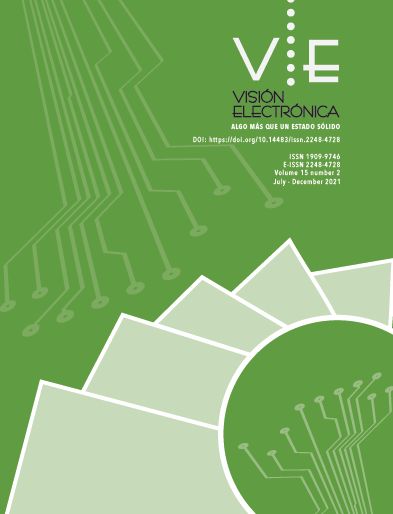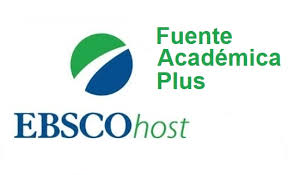DOI:
https://doi.org/10.14483/22484728.18578Publicado:
2021-12-29Número:
Vol. 15 Núm. 2 (2021)Sección:
Visión ActualPerspectives in nanoscience and nanotechnology
Perspectivas en nanociencia y nanotecnología
Palabras clave:
Grafeno, Patrón de moiré, Nanoelectrónica, Nanomaterial (es).Palabras clave:
Graphene, Moire pattern, Nanoelectronics, Nanomaterial (en).Descargas
Resumen (en)
This work is focused on reviewing the theoretical vision of the physicist Richard Feynman about nanoscience and nanotechnology, giving continuity to his ideas in the proper context of physics laws that has led nanoscience and nanotechnology to become robust and active sciences. Some implications of nanotechnology as a general-purpose foundational technology for all economic areas are discussed. Some aspects related to interactions between the fields of mathematics, high-energy physics and condensed matter physics that have allowed the remarkable development of new quantum material platforms for nanoelectronics are also analyzed.
Resumen (es)
En este trabajo se revisa la visión teorética del físico teórico Richard Feynman acerca de la nanociencia y la nanotecnología dando continuidad a sus ideas en el contexto propio de las leyes de la física que ha llevado a la nanociencia y la nanotecnología a convertirse en robustas y activas ciencias. Se discuten algunas implicaciones propias de la nanotecnología vista como una tecnología fundacional de propósito general para todos los sectores de la economía. Así mismo se analizan algunos aspectos de la interacción entre campos de la matemática, la física de altas energías y la física de la materia condensada que han permitido el espectacular desarrollo de las nuevas plataformas de materiales cuánticos para la nanoelectrónica.
Referencias
R. P. Feynman, “There’s Plenty of Room at the Bottom”, In The Pleasure of Finding Things Out: The Best Short Works of Richard Feynman, ed. by J. Robbins. Cambridge MA: Perseus, pp. 117-139, 1999.
R. P. Feynman, “Infinitesimal Machinery”, J. of Microelectromechanical Systems, vol. 2, no. 1, pp. 4- 14, 1993. https://doi.org/10.1109/84.232589
C. Toumey, “Reading Feynman into Nanotechnology: A Text for a New Science”, Techné: Research in Philosophy and Technology, vol. 12, no. 3, pp.133-168, 2008. https://doi.org/10.5840/techne20081231
C. Toumey, “Plenty of room, plenty of history”, Nature Nanotechnology, vol. 4, pp. 783-784, 2009. https://doi.org/10.1038/nnano.2009.357
G. Binnig, H.Rohrer, “Scanning tunneling microscopy”, Surface Science, vol. 126, no. 3, pp. 236-244, 1983. https://doi.org/10.1016/0039-6028(83)90716-1
G. Binnig, “Quate and C. Gerber, Atomic Force Microscope”, Physical Review Letters, vol. 56, no. 9, pp. 930-933, 1986. https://doi.org/10.1103/PhysRevLett.56.930
D.M. Eigler, E. K. Schweizer, “Positioning Single Atoms with a Scanning Tunneling Microscope”, Nature, no. 344, pp. 524-526, 1990. https://doi.org/10.1038/344524a0
G. Binnig, H. Rohrer, “Scanning tunneling microscopy—from birth to adolescence”, Review of Modern Physics., vol. 59, pp. 615-625, 1987. https://doi.org/10.1103/RevModPhys.59.615
G. Binnig, H. Rohrer, Ch. Gerber, E. Weibel, “Surface Studies by Scanning Tunneling Microscopy”, Physical Review Letters, vol. 49, pp. 57-61, 1982. https://doi.org/10.1103/PhysRevLett.49.57
C. J. Chen, “Introduction to scanning tunneling microscopy”, Oxford University Press, New York, 1993.
G. Binnig, H. Rohrer, Ch. Gerber, E. Weibel, “7 × 7 Reconstruction on Si(111) Re-solved in Real Space”, Physical Review Letters, vol. 50, pp. 120-123, 1983. https://doi.org/10.1103/PhysRevLett.50.120
G. Meyer, “Atom manipulation with the scanning tunneling microscope: nanostructur-ing and femtochemistry”, Journal Superlattices and microstructures, vol. 25, no. 2, pp. 463-47, 1999. https://doi.org/10.1006/spmi.1998.0676
S. Morita, “Atom world based on nano-forces: 25 years of atomic force microscopy”, Journal of Electron Microscopy, vol. 60, no. 1, pp. S199–S211, 2011. https://doi.org/10.1093/jmicro/dfr047
O. Custance, R. Perez, S. Morita, “Atomic force microscopy as a tool for atom manipu-lation”, Nature Nanotechnology, vol. 4, pp. 803-810, 2009. https://doi.org/10.1038/nnano.2009.347
S. Hla, “Single-atom manipulation mechanisms during a quantum corral construc-tion”, Physical Review B, vol. 67, no. 20, 2003. https://doi.org/10.1103/PhysRevB.67.201402
F. E. Kalff, “A kilobyte rewritable atomic memory”, Nature Nanotechnology, vol. 11, pp. 926–929, 2016. https://doi.org/10.1038/nnano.2016.131
C. Milburn. ‘‘Nanotechnology in the Age of Posthuman Engineering: Science Fiction as Science”, Configurations, vol. 10, no. 2, pp. 261-95, 2002. https://doi.org/10.1353/con.2003.0017
C. Milburn, “Just for Fun: The Playful Image of Nanotechnology”, Nanoethics, vol. 5, pp. 223–232, 2011. https://doi.org/10.1007/s11569-011-0120-4
N. Taniguchi, “On the basic concept of ‘nano-technology’”, in Proceedings of the In-ternational Conference on Production Engineering, pp. 18-23, 1974.
M. C. Roco, “The long view of nanotechnology development: the National Nano-tech-nology Initiative at 10 years”, Journal of Nanoparticle Research, vol. 13, pp. 427–445, 2011. https://doi.org/10.1007/s11051-010-0192-z
U.S. Environmental Protection Agency, U.S. Environmental Protection Agency Nano-technology White Paper EPA 100/B-07/001, Washington, D.C., U.S. Environmental Protection Agency, 2007.
ISO/TS 80004-1:2015, “nanotechnologies—vocabulary— Part 1: core terms”, Geneva Switzerland, 2007.
K. Savolainen, “Nanosafety in Europe 2015-2025: Towards Safe and Sustainable Nanomaterials and Nanotechnology Innovations”, Helsinky: Finnish Institute of Oc-cupa-tional Health, 2013.
G. Lövestam, “Considerations on a Definition of Nanomaterial for Regulatory Purpos-es”, Joint Research Centre of the European Commission, Ispra, Italy, 2010.
A. J. Bleeker, “Considerations on the EU definition of a nanomaterial: Science to support policy making”, Regulatory Toxicology and Pharmacology, vol. 65, pp.119–125, 2013. https://doi.org/10.1016/j.yrtph.2012.11.007
U. S. Food and Drug Administration, Nanotechnology: A Report of the U.S. Food and Drug Administration Nanotechnology Task Force, 2007.
M. C. Roco, “Overview: affirmation of nanotechnology between 2000 and 2030”, in: Nanotechnology Commercialization: Manufacturing Processes and Products, First Edition., Ed. by T. Mensah, B. Wang, G. Bothun, J. Winter and V. Davis, John Wiley & Sons, Inc. 2018. https://doi.org/10.1002/9781119371762.ch1
S. E. Lyshevski, “Multidisciplinary undergraduate Nano-Science, Engineering and Technology Course”, Proceedings IEEE Conference Nanotechnology, Cincinnati, OH, pp. 399–402, 2006. https://doi.org/10.1109/NANO.2006.247661
M. F. Ashby, P. J. Ferreira, D. L. Schodek, “Nanomaterials, nanotechnologies and de-sign: an introduction for engineers and architects”, Elsevier, Oxford, 2009. https://doi.org/10.1016/B978-0-7506-8149-0.00003-9
G. Fiori, “Electronics based on two-dimensional materials”, Nature Nanotech-nology, vol. 9, pp. 768–779, 2014. https://doi.org/10.1038/nnano.2014.207
M. C. Lemme, “Two-dimensional materials for electronic applications”, Materials Re-search Society Bulletin, vol. 39, pp. 711-718, 2014. https://doi.org/10.1557/mrs.2014.138
M. Houssa, A. Dimoulas, A. Molle, “2D Materials for Nanoelectronics”, CRC Press Taylor & Francis Group, Boca Ratón FL, 2016. https://doi.org/10.1201/b19623
E. C. Ahn, “2D materials for spintronic devices”, 2D Materials and Applications, vol. 4, no. 17, 2020. https://doi.org/10.1038/s41699-020-0152-0
K. S. Novoselov, “Electric Field Effect in Atomically Thin Carbon Films”, Science, vol. 306, pp. 666-669, 2004. https://doi.org/10.1126/science.1102896
K. S. Novoselov, “Two-dimensional atomic crystals”, Proceedings of the National Academy of the United States of America, vol. 102, no. 30, pp. 10451–10453, 2005. https://doi.org/10.1073/pnas.0502848102
K. S. Novoselov, “Two-dimensional gas of massless Dirac fermions in graphene”, Na-ture, vol. 438, pp. 197–200, 2005. https://doi.org/10.1038/nature04233
N. M. Peres, “Graphene, New Physics in two dimensions”, Europhysics News, vol. 40, no.3, pp.17-20, 2009. https://doi.org/10.1051/epn/2009501
P. R. Wallace, “The band theory of graphite”, Physical Review, vol. 71, no. 9, 1947. https://doi.org/10.1103/PhysRev.71.622
S. Das Sarma, “Electronic transport in two-dimensional graphene”, Reviews of Modern Physics, vol. 83, pp. 407-2011. https://doi.org/10.1103/RevModPhys.83.407
L. E. Foa, S. Roche, J. C. Charlier, “Introduction to Graphene-Based Nano-materials”, Cambridge University Press, New York, 2014.
D. Fathi, “A Review of Electronic Band Structure of Graphene and Carbon Nanotubes Using Tight Binding”, Journal of Nanotechnology, vol. 2011, 2011. https://doi.org/10.1155/2011/471241
C. Kittel, “Introduction to Solid State Physics”, 8th ed. John Wiley & Sons, Inc., New York, 2004.
V. Ariel, A. Natan, “Electron effective mass in graphene”, International Conference on Electromagnetics in Advanced Applications, 2013. https://doi.org/10.1109/ICEAA.2013.6632334
E. Tiras, “Effective mass of electron in monolayer graphene: Electron-phonon interac-tion”, Journal of Applied Physics, vol. 113, no. 4, 2013. https://doi.org/10.1063/1.4789385
F. D. Haldane, “Model for a Quantum Hall Effect without Landau Levels: Condensed-Matter Realization of the Parity Anomaly”, Physical Review letters, vol. 61, no. 18, 1988. https://doi.org/10.1103/PhysRevLett.61.2015
J. Cayssol, “Introduction to Dirac materials and topological insulators”, Comptes Ren-dus Physique, vol. 14, no. 9, pp. 760–778 ,2013. https://doi.org/10.1016/j.crhy.2013.09.012
K. S. Park, K. S. Yi, “Supersymmetric Quantum Mechanics in Graphene”, Journal of the Korean Physical Society, vol. 50, no. 6, 2007. https://doi.org/10.3938/jkps.50.1678
K. S. Park, “Topological Effects, Index Theorem and Supersymmetry in Graphene”, in Physics and applications of graphene theory, ed. by Sergey Mikhailov, 2011. https://doi.org/10.5772/15353
J. K. Pachos, A. Hatzinikitas, M. Stone, “Zero modes of various graphene configura-tions from the index theorem”, The European Physical Journal Special Topics, vol. 148, no. 1, p. 127-132, 2007. https://doi.org/10.1140/epjst/e2007-00232-6
K. S. Novoselov, “A roadmap for graphene”, Nature, vol. 490, no. 7419, pp. 192-200, 2012. https://doi.org/10.1038/nature11458
P. Miró, M. Audiffred, T. Heine, “An atlas of two-dimensional materials”, Chemical So-ciety Reviews, vol. 43, pp. 6537–6554, 2014. https://doi.org/10.1039/C4CS00102H
Z. Lu, “2D Materials Based on Main Group Element Compounds: Phases, Synthe-sis, Characterization, and Applications”, Advanced Functional Materials, vol. 30, no. 40, 2020. https://doi.org/10.1002/adfm.202001127
W. Han, “Graphene spintronics”, Nature nanotechnology, vol. 9, no. 10, p. 794-807, 2014. https://doi.org/10.1038/nnano.2014.214
D. Akinwande, N. Petrone, J. Hone, “Two-dimensional flexible nanoelectronics”, Na-ture Communications, vol. 5, 2014. https://doi.org/10.1038/ncomms6678
J. Park, “Flexible electronics based on one-dimensional and two-dimensional hy-brid nanomaterials”, InfoMat, vol. 2, no. 1, pp. 33-56, 2020. https://doi.org/10.1002/inf2.12047
B. Radisavljevic, M. B. Whitwick, A. Kis, “Integrated circuits and logic operations based on single-layer”, ACS Nano, vol. 5, pp. 9934–9938, 2011. https://doi.org/10.1021/nn203715c
B. Sa, “Strain Engineering for Phosphorene: The Potential Application as a Photo-catalyst”, The Journal of Physical Chemistry C, vol. 118, pp. 26560–26568, 2014. https://doi.org/10.1021/jp508618t
S. Zhang, “Atomically thin arsenene and antimonene: semimetal– semiconductor and indirect–direct band-gap transitions”, Angewandte Chemie International Edition, vol. 54: pp. 3112-3115, 2015. https://doi.org/10.1002/anie.201411246
Z. Ni, “Tunable bandgap in Silicene and Germanene”, Nano Lett., vol. 12, pp. 113–118, 2012. https://doi.org/10.1021/nl203065e
Z. Zhang, “Tunable electronic and magnetic properties of two-dimensional materials and their one-dimensional derivatives”, WIREs Computational Molecular Science, vol. 6, pp. 324–350, 2016. https://doi.org/10.1002/wcms.1251
Y. Cao, “Correlated insulator behaviour at half-filling in magic angle graphene super-lattices”, Nature, vol. 556, no. 7699, p. 80-84, 2018. https://doi.org/10.1038/nature26154
T. Vincent, “Opportunities in Electrically Tunable 2D Materials Beyond Graphene: Re-cent Progress and Future Outlook”, Condensed Matter, Mesoscale and Nanoscale Physics, 2013.
R. Bistritzer, A. H. MacDonald, “Moiré bands in twisted double-layer graphene”, Pro-ceedings of the National Academy of Sciences of the United States of America, vol. 108, no. 30, pp. 12233-12237, 2011. https://doi.org/10.1073/pnas.1108174108
B. A. Bernevig, T. L. Hughes, “Topological insulators and topological superconduc-tors”, Princeton University Press, 2013. https://doi.org/10.1515/9781400846733
E. Vega, J. Pacheco, M. Baquero, “Threads and nanotechnology: monitoring of the vital pulse signal”, Visión electrónica, vol. 2, no. 1, Special edition, 2019. https://doi.org/10.14483/issn.2248-4728
L. H. Camargo-Casallas; J. F. Pantoja-Benavides; D. J. Rodríguez-Patarroyo, “Kinetics of nanoparticles in sanguinean torrent by approximation, Womersley flow”, Visión electrónica, vol. 13, no. 1, 2019, pp. 33-38. https://doi.org/10.14483/22484728.14409
S. Anand, V. Verma, A. Gupta Aggarwal, “2-Dimensional Multi-Release Software Re-liability Modelling considering Fault Reduction Factor under imperfect debugging”, Ing. Solidar, vol. 14, no. 25, pp. 1-12, 2018. https://doi.org/10.16925/.v14i0.2229
M. Gupta, V. Kumar Solanki, V. Kumar Singh, “A Novel Framework to Use Association Rule Mining for classification of traffic accident severity”, ing. Solidar, vol. 13, no. 21, pp. 37-44, 2017. https://doi.org/10.16925/in.v13i21.1726
K. Landines Jiménez, N. Nieves Pimiento, C. A. Toledo Bueno, "Simulation of forces applied to the human femur: Analysis of finite elements", Revista Vínculos, vol. 16, no. 1, pp. 73–81, 2019. https://doi.org/10.14483/2322939X.15575
Cómo citar
APA
ACM
ACS
ABNT
Chicago
Harvard
IEEE
MLA
Turabian
Vancouver
Descargar cita
Licencia
Derechos de autor 2021 Visión electrónica

Esta obra está bajo una licencia internacional Creative Commons Atribución-NoComercial 4.0.
.png)
atribución- no comercial 4.0 International






.jpg)





